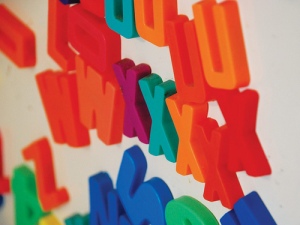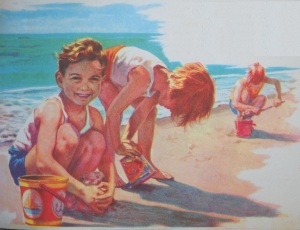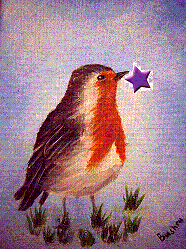Posts Tagged ‘educational’
10
Jan
Posted by evelynsaenz in art, Beginning Readers, beginning to read, Educational Toys, homeschooling, learning centers, Limited Vocabulary, pre-teen suggestions, Spelling, Vocabulary, Word Games. Tagged: activities, beginning to read, children, classroom, creative, discovery bottles, educational, evelyn saenz, games, hands-on, homeschooling, learning centers, letters, prefix, root words, spelling, suffix, teaching, unit studies, wonder bottles, word attack skills, word skills. Leave a comment

Letters for Discovery Bottles
Wonder Bottles don’t have to be just for babies. Try creating a series of Discovery Bottles for your first to sixth graders with magnet letters hidden in sand, water with glitter, or snowy white beads.
As they turn the bottles around, they search for the letters contained in the bottle. Try words like wintry, wintertime, wintriest, winterize, wintering, wintered. Write a number on the bottom of each bottle.
Have your children make a list with each words they discover written next to the appropriate number. Older children might like making new Discovery Bottles with surprise words.
Challenge them to find words in a dictionary or in books they are reading, pop the letters into a Discovery Bottle and see how many others can recognize the word.
Discovery Bottles can work wonderfully for homeschooling families with children of different ages and abilities. Have the more advanced children make bottles for the younger ones. Pair up to create new bottles or to help each other discover the words.
Lots more fun, hands-on learning activities for winter or any time can be found at Wintertime Unit Study Activities.
Photo Credit: Fridge magnet-art
By jrsnchzhrs
on Flickr, Creative Commons</p>
8
Jan
Posted by evelynsaenz in homeschooling, learning centers, nature, science, sealife, unit studies. Tagged: activities, animals, children, classroom, creative, educational, evelyn saenz, games, hands-on, kindergarten, learning, learning centers, teaching, unit studies. 1 comment
Lobster Prey Learning Center: What do Lobsters eat?

Exploring Ocean Life
About midway though our lobster unit study I open the Ocean Floor Learning Center on the classroom rug. I wait until the children have enough knowledge of the lives of lobsters for them to be able to use this knowledge in the center.
Set up an Ocean Floor Learning Center on your classroom rug. Inhabit the ocean floor with plastic lobsters, crabs, fish, shellfish, seaweed and other plants and animals found in a lobster’s habitat. Use a permanent marker to label each animal with it’s name. Create a shelf for storing each of the animals. Label each animal’s spot on the shelf so that the children can practice reading the words as they put them back in order.

Exploring a lobster in the Ocean Floor Learning Center
Children play the parts of animals of their choice as they act out scenes from the everyday lives of lobsters.
Tactile and visual learners will benefit from playing with the animals that the lobster eats. Turn your rug into an ocean floor and let the lobsters find their prey.
12
Nov
Posted by evelynsaenz in homeschooling. Tagged: activities, calendar, children, educational, evelyn saenz, homeschooling, months, new year, parents, play, teaching. Leave a comment
Children need plenty of time to play, explore and discover the world around them. This calendar celebrates the wonders of childhood with vintage illustrations of children learning throughout the year.
What are some of the activities you will be doing this year?
8
Nov
Posted by evelynsaenz in autumn, backyard habitat, board games, Educational Toys, homeschooling, Limited Vocabulary, math, nature, science, teaching social skills. Tagged: activities, board games, cats, children, christmas, classroom, cooperative, education, educational, first grade, games, homeschooling, kindergarten, learning centers, math, students, teaching. Leave a comment
Max the Cat cooperative Board Game
Max the Cat is Hungry! Scurry, Climb or Fly for your Lives!

Max the Cat: A Cooperative Board Game
While blue jays sing in the trees, chipmunks scavenge for nuts and seeds, and mice do what mice do, a fat old cat named Max finds his way out the door of his house.
His owners have only so many treats to get him back inside, and Max is a quick treat-eater. Can you distract Max long enough for the woodland creatures to get safely home?
Watch out– Max is hungry!
This fun cooperative board game will help children understand about the natural relationships between cats and the small woodland creatures living in your backyard.

1
Sep
Posted by evelynsaenz in math, Mathematics, Uncategorized. Tagged: activities, children, discovery, educational, enjoy, first grade, games, hands-on, hands-on math, interactive, kindergarten, learning centers, math journals, measurement, students, teaching, unit studies. Leave a comment

Measuring a Snail
Math is fun, artistic, musical, historical, scientific, active, something to write home about.
Mathematics can be taught using fun, interactive learning materials as part of unit studies and as an everyday part of life.
All children can learn and enjoy math when given the right materials and opportunities. The best games for learning math involve children working together to discover the mathematical principles behind the activity.
Children should be expected to make up their own math games and play those games with others often.
Math can be enhanced by explaining what you have learned to others and by writing down those explanations in math journals.
Exciting ideas for teaching math can be found at I Love Teaching Math.
Photo Credit: He’s too tiny to measure up.
on Flickr, Creative Commons.
13
Mar
Posted by evelynsaenz in frog, Stamps, Uncategorized. Tagged: education, educational, flowers, frogs, iris, lambs, letters, mail, postage, sheep, snail mail, Stamps, writing, writing letters. 3 comments
Come on over to the Frog Pond and see all the beautiful things from Zazzle to help encourage your children to write. There are notebooks, cards, and other items to inspire your children. My favorites are the stamps. These are unique US Postage stamps that can be used to snail mail all your friends and family. Come take a look at all the amazing designs available.
8
Dec
Posted by evelynsaenz in Beginning Readers, Limited Vocabulary, picture books. Tagged: alhberg, allen alhberg, beginning to read, big bad pig, children, educational, emergent readers, first grade, homeschooling, kindergarten, learning, pigs. Leave a comment
 Big Bad Pig by Allan Ahlberg
Big Bad Pig by Allan Ahlberg
My rating: 5 of 5 stars
Big Bad Pig is one of the funniest books written for emergent readers. With very limited vocabulary Allan Ahlberg reverses the story of the Big Bad Wolf and turns it into a tale that is not only easily read by beginning readers but is fun to read for both the child and the adult.
When my children began to read, I looked for Beginning Readers that would capture their attention in order to help them develop a love of reading that would last a lifetime. I found that in Red Nose Readers. These funny little books are a pleasure for both adults and children. Showing children how much pleasure that you derive from reading is essential to developing a lifetime love of reading.
Red Nose Readers will help your emergent reader take off to a lifetime of reading pleasure.
View all my reviews >>
7
Dec
Posted by evelynsaenz in Uncategorized. Tagged: educational, fractals, geometry, googols, hands-on, homeschooler, homeschooling, inventions, learning, math, mobius strip, tangrams. Leave a comment
 Fractals, Googols and Other Mathematical Tales by Theoni Pappas
Fractals, Googols and Other Mathematical Tales by Theoni Pappas
My rating: 5 of 5 stars
The beginning of Fractals, Googols and Other Mathematical Tales reminds me of Flatland A Romance of Many Dimensions by Edwin A. Abbott. It begins with a 3 dimensional cat landing in a 2 dimensional world but Fractals, Googols and Other Mathematical Tales quickly goes on to other mathematical subjects. From Mobius Strips to Fibinocci rabbits, tangram cats, and the invention of the decimal point, this is a fun read aloud that will get you thinking about, experimenting with and enjoying math in a fun, hands-on, creative way. Great book for middle schoolers and especially homeshoolers of that age.
View all my reviews >>
More wonderful ideas for exploring math with teens can be found at The Fun and Games of Pre-Algebra.
1
Dec
Posted by evelynsaenz in art, Uncategorized, unit studies. Tagged: 2009, activities, awards, birds, creative, educational, giant squids, learning, lessons, robins, squidoo, teaching, unit studies, voting. Leave a comment

2009 Award
You can Vote Now for the 2009 Giant Squid Awards
It’s time for the 2009 Giant Squid Awards! Over 100 Giants in 15 Categories have been nominated including Robin in the Rain. Look for the robins under “Best Sports/Outdoors Lens Nominees “.
Now sit back, relax and take a look at these fabulous lenses. I know it’s going to be hard to decide because all these lenses are truly amazing…but there can only be one winner. So get ready, get set, start VOTING…once per category, please!
PS – Everyone can vote! So blog, e-mail, create a lens and get creative about getting votes for yourself and your favorite lenses.
29
Nov
Posted by evelynsaenz in Educational Toys, frog, Uncategorized. Tagged: activities, christmas, creative, educational, first grade, frogs, games, gits, hands-on, kindergarten, learning, learning centers, math, stocking stuffers, toys. Leave a comment

ThinkFun Hoppers Frog Game
When I was looking for stocking stuffers for my frog loving children the other day I ran across ThinkFun Hoppers .
.
ThinkFun Hoppers is a fun, educational game that my kids love to play anytime, anywhere and the case is so compact that it can be slipped into a Christmas Stocking. My kids love this game.
is a fun, educational game that my kids love to play anytime, anywhere and the case is so compact that it can be slipped into a Christmas Stocking. My kids love this game.
I include in my Frog Unit Study. The kids love to play with these little frogs as they hop over eachother from lilypad to lilypad.
ThinkFun Hoppers comes with a lilypad covered pond, a pond full of green frogs and a single red frog. There are cards that can be used to set up scenarios for jumping to eliminate all the green frogs. The cards go from easy to hard. My kids love challenging themselves to try to do all the cards in as short a time as possible.
comes with a lilypad covered pond, a pond full of green frogs and a single red frog. There are cards that can be used to set up scenarios for jumping to eliminate all the green frogs. The cards go from easy to hard. My kids love challenging themselves to try to do all the cards in as short a time as possible.
ThinkFun Hoppers can help children who are beginning to understand addition and subtraction as they add frogs to the pond and subtract them while playing the game.
can help children who are beginning to understand addition and subtraction as they add frogs to the pond and subtract them while playing the game.
ThinkFun Hoppers and Multiple Intelligences
and Multiple Intelligences
Kinesthetic: The movement of the frogs and the action of placing the frogs on the board helps to reinforce their sense of the mathematical concepts of addition and subtraction.
Visual: Cute frogs and appealing lilypads attracts visual learners to the ThinkFun Hoppers game while seeing the actual number of frogs change as they are added or removed helps visual learners.
game while seeing the actual number of frogs change as they are added or removed helps visual learners.
Auditory: I ask my auditory learners to work with a partner to talk about the number of frogs on the board as they are added or subtracted. Hearing the information aloud reinforces the mathematical concepts for them.


















Comments